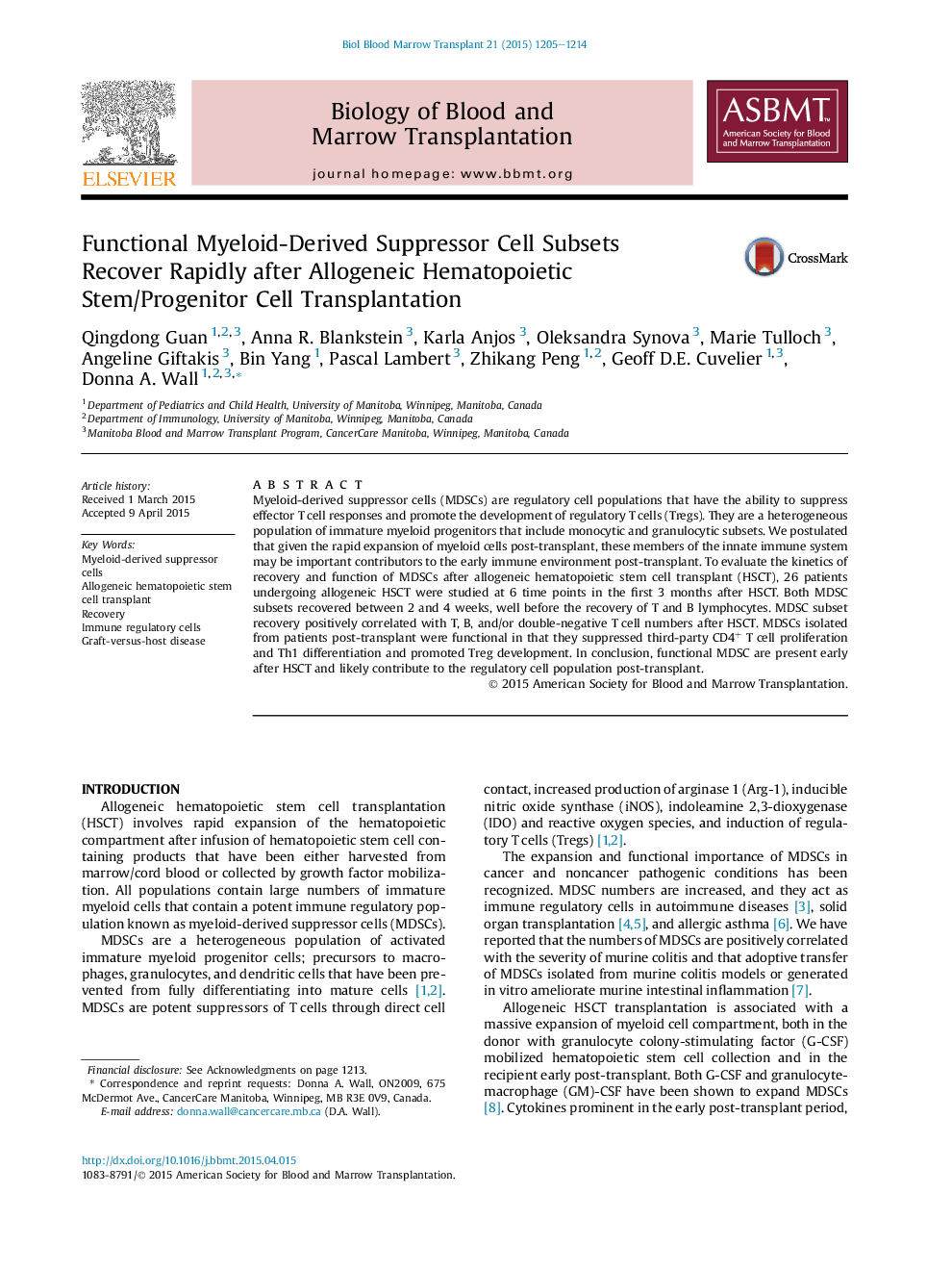| Article ID | Journal | Published Year | Pages | File Type |
|---|---|---|---|---|
| 2102244 | Biology of Blood and Marrow Transplantation | 2015 | 10 Pages |
1.Myeloid-derived suppressor cells (MDSCs) are present in the first wave of hematopoiesis after HSCT.2.MDSCs can inhibit Th1 differentiation and promote Treg development.
Myeloid-derived suppressor cells (MDSCs) are regulatory cell populations that have the ability to suppress effector T cell responses and promote the development of regulatory T cells (Tregs). They are a heterogeneous population of immature myeloid progenitors that include monocytic and granulocytic subsets. We postulated that given the rapid expansion of myeloid cells post-transplant, these members of the innate immune system may be important contributors to the early immune environment post-transplant. To evaluate the kinetics of recovery and function of MDSCs after allogeneic hematopoietic stem cell transplant (HSCT), 26 patients undergoing allogeneic HSCT were studied at 6 time points in the first 3 months after HSCT. Both MDSC subsets recovered between 2 and 4 weeks, well before the recovery of T and B lymphocytes. MDSC subset recovery positively correlated with T, B, and/or double-negative T cell numbers after HSCT. MDSCs isolated from patients post-transplant were functional in that they suppressed third-party CD4+ T cell proliferation and Th1 differentiation and promoted Treg development. In conclusion, functional MDSC are present early after HSCT and likely contribute to the regulatory cell population post-transplant.
Graphical AbstractFigure optionsDownload full-size imageDownload high-quality image (193 K)Download as PowerPoint slide
